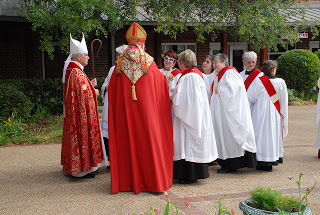Dwight Longenecker's Blog, page 355
April 28, 2011
Todd on Fr Pleger's Suspension
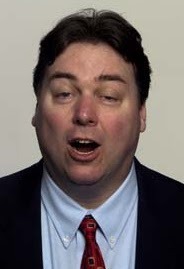 Guest blogger Todd Unctuous is top commentator for MSM. With a degree in Media Studies from Scranton Community College, Todd writes for many papers and websites, and is known for his incisive writing, objective reporting and razor sharp comment.
Guest blogger Todd Unctuous is top commentator for MSM. With a degree in Media Studies from Scranton Community College, Todd writes for many papers and websites, and is known for his incisive writing, objective reporting and razor sharp comment.News has reached this office today of the tragic punishment of a courageous Catholic priest named Father Pfleger. Father Pfleger is a brave priest who has served his church and his people with much courage. Working in an inner city parish populated with many African Americans, Father Pfleger has fit in with the prevailing sub culture and bravely adopted a style of preaching that his audience would appreciate. A voice for the voiceless, this brave priest stood up for those who did not have a voice. He was friends with Nobel prize winning president Barack Obama. He stood shoulder to shoulder with fiery preacher, Rev. Jeremiah Wright. He watched Oprah Winfrey on a regular basis.
Now he has been excommunicated by Cardinal George--the leader of the Catholic Church in Chicago. This witch-hunt is reminiscent of the notorious Inquisition in which the Catholic Church persecuted and killed millions of innocent people in scenes reminiscent of the notorious concentration camps of the Nazis. And who can forget that Adolph Hitler himself was baptized as a Catholic? Cardinal George has not only slapped down the courageous Father Pfleger, but he has slapped down the entire African American community. "You cannot have the priest you want anymore!" this heartless hiearchical person has said. "You will have the priest I want you to have." Now Fr. Pfleger has been cast out into the wilderness, and like Martin Luther his mentor who has gone before him, Fr Pfleger will now step out into the wilderness with the same courage and start his own church. I predict that Pflegerism will become the new religion of the city of Chicago as 'the huddled masses' who 'yearn to breathe free' will flock to Fr Pfleger's church.
I am not myself a religious man, but I respect those who do have strong religious opinions like the late "King of Pop" Michael Jackson, Sally Field the Flying Nun and the recently departed Nancy Pelosi. These people show us that it is possible to be Catholic in the broadest sense while still retaining a sense of humor and compassion for people who are not very well educated. Fr Pfleger's new church will doubtless rise strong and vocal standing up for freedom and justice everywhere. In the meantime, I predict that the tired old Catholic Church of Cardinal George will continue to shield known pedophile priests while persecuting and hounding out of office the few courageous and outspoken priests they do have. I do not have strong opinions about religion or religious people, but I know bigotry and cruelty when I see it, and today I stand firmly shoulder to shoulder with Fr Pfleger.
"Let's Pfly the Pflag for Pfleger!" Is what I say!
Published on April 28, 2011 06:15
A Serious Post About Women Priests
G.K.Chesterton said it is all well and good to have an open mind, but the only reason to have an open mind, is the same reason we have an open mouth--in order eventually to close it on something. So, on this blog, when it comes to the subject of women's ordination, we are accused of taking a lighthearted--even mocking tone. Perhaps we don't take the subject (and the women) seriously enough. But if we sometimes send women priests up it is not because we haven't thought through the subject, but because we have thought it through and come out the other side. I can speak for myself, that I have honestly opened my mind on the subject, and eventually closed it on something called 'the apostolic faith'.
I went through this exciting and frustrating process in the 1980's and early 1990's as the Church of England debated whether or not to ordain women to the priesthood. I was, at the time, a country vicar on the Isle of Wight. I was in charge of two beautiful old country churches, had an enjoyable and rewarding ministry, a large vicarage house and a young wife and family. I had, from a worldly point of view, everything to lose. My point of view was then, what it had been for some time--to be open minded to new things and to 'affirm not deny'. This point of view had brought me from a conservative Evangelical mindset to a middle of the road 'Catholic' position in the Church of England. I considered myself to be an "Evangelical Charismatic Catholic"--trying to draw the best from all three of these traditions.
Therefore, when faced with the prospect of women priests, although my first instinct was to be opposed, (because I am innately suspicious of innovation in the church) I also determined to listen to both sides of the argument. At theological college in the early 80s the women were already receiving the same education as the men in preparation to be deaconesses (with the unspoken assumption that eventually women's ordination would go through and they would become priests) The women at college were a mixture just like the men were. Some seemed devout and down to earth and serious about loving God. Others seemed egocentric, ambitious and obnoxious. Now they, and many others, were lining up to be ordained as priests.
So as the debate raged on in all levels of the church I listened carefully to both sides. I discovered that those in favor of women's ordination had good arguments from Scripture and tradition. They wheeled out their psychological experts, their historians, their sociologists, their Bible scholars, their personal stories. They summoned witnesses from the Evangelical, Liberal and Anglo Catholic wings of the Church. Furthermore, I observed their lives. These were good church people. They loved God, read the Bible, went to Church, paid their dues, helped the poor, prayed their prayers and loved the Church. They really honestly thought that women priests would be good for the Church and that the Holy Spirit was leading the Church to accept this change.
Then I listened to those who were opposed to women's ordination. They too had good arguments from Scripture and tradition. They too had a whole panoply of experts and panel of witnesses from each part of the Church. They too were good church people who loved God and his Church and were really, really convinced that the Holy Spirit was definitely not leading the Church to make such an innovation.
So I looked more closely at the arguments in the Church of England for women priests. The main arguments were not Scriptural or traditional, although those arguments were summoned. They could not be the main arguments because, of course, while it may be argued from Scripture and tradition that women priests might be permitted, it could never be argued from Scripture and Tradition that they were demanded.
Instead, the main arguments were sentimental, political and utilitarian. Sentimental: "Sally is such a nice and good person. How hurtful that she can't be ordained!" Political: "It's a question of equal rights. Women should not be denied the role of priest if that is what they feel called to." Utilitarian: "Sally is such a wonderful preacher and has such a pastor's heart. She'll make such a good priest!" While the sentimental, political and utilitarian arguments should be considered, it seemed dangerous that they should be the prevailing arguments, for most anything at all can be argued using those three flexible friends. Instead this dilemma caused me to look for an authority structure which was deeper, older and bigger than such subjectivity.
How does the church make such a decision? The Church of England by now had accepted a synodal form of government. Three houses of Bishops, Clergy and Laity were elected from the Dioceses. Election campaigns were conducted and votes were taken. Was this form of church government found in the Scriptures or in the history of the Catholic Church? No. A conciliar hierarchy was what Scripture and tradition gave us. The elected synod model resulted in unseemly electioneering and ultimate indecision. When those in favor of women's ordination lost the vote (as they did in the early days) did they say, "Well that is the mind of the church. We'll live with it." No. They said, "We'll have to rally the troops, put in a bit more effort and win the vote next time." When those opposed eventually lost did they say, "The Holy Spirit has led the church in this new direction let's get used to it." No. They said, "We want our own church within a church with no women priests."
All of this made me ask, "How can such decisions be made in the church without division?" This made me turn again to the authority claims of the Catholic Church. Here was a church that had the breadth of experience and vision to consider the needs of the whole church globally (not just the demands of the church in the developed world) it also had the experience and insight of the ages--considering the traditions and teachings of the church for the last 2,000 years. Here also was a method that was consultative and careful and which was able to accept change and adapt where necessary. Most of all, the Catholics had the Pope. They had an authority structure which had a final say. Love it or hate it, there was a system that was bigger and older than all the petty local argumentation which could come to a conclusion. Rome could speak and that could settle it.
While I sometimes poke fun at women clergy I can accept that many of them make good and faithful Christian ministers. I accept that they do a good job and that they may do a better job than a lot of the men. But these questions are beside the point. Women clergy may be doing a good job in the Protestant churches and good for them. However, they are not Catholic priests or deacons, and when they pretend that they are, I'm afraid they are not on very strong ground, and that's when it all becomes...well...I have to admit it...kind of funny.
I went through this exciting and frustrating process in the 1980's and early 1990's as the Church of England debated whether or not to ordain women to the priesthood. I was, at the time, a country vicar on the Isle of Wight. I was in charge of two beautiful old country churches, had an enjoyable and rewarding ministry, a large vicarage house and a young wife and family. I had, from a worldly point of view, everything to lose. My point of view was then, what it had been for some time--to be open minded to new things and to 'affirm not deny'. This point of view had brought me from a conservative Evangelical mindset to a middle of the road 'Catholic' position in the Church of England. I considered myself to be an "Evangelical Charismatic Catholic"--trying to draw the best from all three of these traditions.
Therefore, when faced with the prospect of women priests, although my first instinct was to be opposed, (because I am innately suspicious of innovation in the church) I also determined to listen to both sides of the argument. At theological college in the early 80s the women were already receiving the same education as the men in preparation to be deaconesses (with the unspoken assumption that eventually women's ordination would go through and they would become priests) The women at college were a mixture just like the men were. Some seemed devout and down to earth and serious about loving God. Others seemed egocentric, ambitious and obnoxious. Now they, and many others, were lining up to be ordained as priests.
So as the debate raged on in all levels of the church I listened carefully to both sides. I discovered that those in favor of women's ordination had good arguments from Scripture and tradition. They wheeled out their psychological experts, their historians, their sociologists, their Bible scholars, their personal stories. They summoned witnesses from the Evangelical, Liberal and Anglo Catholic wings of the Church. Furthermore, I observed their lives. These were good church people. They loved God, read the Bible, went to Church, paid their dues, helped the poor, prayed their prayers and loved the Church. They really honestly thought that women priests would be good for the Church and that the Holy Spirit was leading the Church to accept this change.
Then I listened to those who were opposed to women's ordination. They too had good arguments from Scripture and tradition. They too had a whole panoply of experts and panel of witnesses from each part of the Church. They too were good church people who loved God and his Church and were really, really convinced that the Holy Spirit was definitely not leading the Church to make such an innovation.
So I looked more closely at the arguments in the Church of England for women priests. The main arguments were not Scriptural or traditional, although those arguments were summoned. They could not be the main arguments because, of course, while it may be argued from Scripture and tradition that women priests might be permitted, it could never be argued from Scripture and Tradition that they were demanded.
Instead, the main arguments were sentimental, political and utilitarian. Sentimental: "Sally is such a nice and good person. How hurtful that she can't be ordained!" Political: "It's a question of equal rights. Women should not be denied the role of priest if that is what they feel called to." Utilitarian: "Sally is such a wonderful preacher and has such a pastor's heart. She'll make such a good priest!" While the sentimental, political and utilitarian arguments should be considered, it seemed dangerous that they should be the prevailing arguments, for most anything at all can be argued using those three flexible friends. Instead this dilemma caused me to look for an authority structure which was deeper, older and bigger than such subjectivity.
How does the church make such a decision? The Church of England by now had accepted a synodal form of government. Three houses of Bishops, Clergy and Laity were elected from the Dioceses. Election campaigns were conducted and votes were taken. Was this form of church government found in the Scriptures or in the history of the Catholic Church? No. A conciliar hierarchy was what Scripture and tradition gave us. The elected synod model resulted in unseemly electioneering and ultimate indecision. When those in favor of women's ordination lost the vote (as they did in the early days) did they say, "Well that is the mind of the church. We'll live with it." No. They said, "We'll have to rally the troops, put in a bit more effort and win the vote next time." When those opposed eventually lost did they say, "The Holy Spirit has led the church in this new direction let's get used to it." No. They said, "We want our own church within a church with no women priests."
All of this made me ask, "How can such decisions be made in the church without division?" This made me turn again to the authority claims of the Catholic Church. Here was a church that had the breadth of experience and vision to consider the needs of the whole church globally (not just the demands of the church in the developed world) it also had the experience and insight of the ages--considering the traditions and teachings of the church for the last 2,000 years. Here also was a method that was consultative and careful and which was able to accept change and adapt where necessary. Most of all, the Catholics had the Pope. They had an authority structure which had a final say. Love it or hate it, there was a system that was bigger and older than all the petty local argumentation which could come to a conclusion. Rome could speak and that could settle it.
While I sometimes poke fun at women clergy I can accept that many of them make good and faithful Christian ministers. I accept that they do a good job and that they may do a better job than a lot of the men. But these questions are beside the point. Women clergy may be doing a good job in the Protestant churches and good for them. However, they are not Catholic priests or deacons, and when they pretend that they are, I'm afraid they are not on very strong ground, and that's when it all becomes...well...I have to admit it...kind of funny.
Published on April 28, 2011 04:08
April 27, 2011
Priest Arrested!
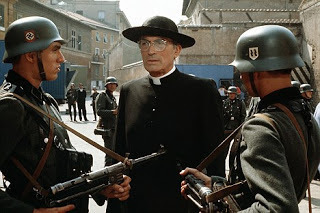
Yesterday a humble cleric who was merely going about his business trying to save souls was arrested for 'thought crimes'. Fr. Duane Pennypacker was accused of being 'immature' and 'insecure' for allowing people to poke fun at some very serious women dressed up as clergymen.
The interrogator at police headquarters said, "You should be praying for zose you disagree viss, instead off making fun off zem." Fr. Pennypacker was sent to be 're-educated' at a local 'training center' which is run by the Reverend Lavinia Wickett. Rev. Ms. Wickett said, "We have a 100% success rate at Dworkin House. Misogynistic priests like Fr Pennypacker either come through the education process fully converted to the idea of women priests or they leave the Anglican Church." The Association for Civil Liberties was asked to comment on the arrest of Fr. Pennypacker and their spokesperson said, "Bigotry has no rights. Fr Pennypacker is arrogant and cruel to women. It is right that he should spend some time with Reverend Wickett at Dworkin House. She'll put him right soon enough."
Published on April 27, 2011 19:13
April 26, 2011
Gaggle?
Published on April 26, 2011 12:04
April 24, 2011
Cannibals, Crocodiles and Corpses
 An excerpt from my book Adventures in Orthodoxy--Twenty Short Chapters on the Apostles' Creed.
An excerpt from my book Adventures in Orthodoxy--Twenty Short Chapters on the Apostles' Creed.Any school child that thinks about the resurrection of the body soon starts asking delightfully gruesome questions. After all, if they've ever seen a cat hit by a car, then been to a funeral and seen Uncle Mitch in the casket, and watched the coffin being lowered into the ground they have a pretty good idea what happens. It doesn't take long to figure out that dead bodies decay and that Uncle Mitch, who sat them on his knee for a story and gave them huge bowls of ice cream now lies very still in a box going all gooey like the cat by the roadside.
Therefore the difficulty of believing in the resurrection of the body soon hits home. To put it bluntly, how can the body be resurrected if worms have eaten it and turned it back into topsoil? The questions continue. What about Aunty Hazel who loved doing crosswords and amateur dramatics? She was cremated and her ashes can be seen in an urn on Uncle Bert's mantelpiece. Will those ashes be magically put back together again into an all singing, all dancing, puzzle solving Aunty Hazel? Or what about people who were blown to bits by a bomb or were eaten by sharks or crocodiles or lions and tigers and bears; Oh my!
We don't want to insult God's accounting practices. We know he keeps track of every hair on our head, and know when every sparrow falls, but is he really going to keep track of every molecule of Grandpa and Aunty Hazel and the missionaries who were eaten by cannibals? Will he track them all down and summon them all up to be put back together again like some vast cosmic jigsaw puzzle?
The question is a good one, and ought to interest everyone because we all have a morbid curiosity about the gruesome details. That's why we slow down at road accidents. There are really only three ways around it. First, faced with the poetic foolishness of such an idea we may simply opt for the atheist's solution and say there is no such thing as life after death. This would put us in a minuscule minority when faced with the huge number of human beings who do believe in life after death, but nevertheless, the atheist solution, although it takes great faith and courage to adhere to, is one solution.
The second solution is that there is no such thing as the resurrection of the body, and instead we continue to exist in a merely spiritual state. But when you stop to imagine such a state it is impossible to do so. At least, it is impossible to do so while still retaining any sense in which a particular person continues to exist as the same particular person. As soon as we start imagining Aunty Hazel existing on the other side, but without a body, she ceases to be Aunty Hazel and becomes an ectoplasm or an amoeba—just an amorphous something. We might try to imagine Aunty Hazel as just her personality or spirit, but as soon as we do, her smiling face appears, and we remember her belting out "There's no business like show business." In other words, Aunty Hazel can't exist as just personality or spirit because Aunty Hazel was always more than just a personality. She was a person. So if we believe in life after death, but not the resurrection of the body, then we can't say a particular person continues to exist as that particular person. That's why some religions say that in the after life we get rid of bodies altogether and are simply absorbed back into the cosmic Spirit.
The third option, is that we continue to exist as the people we are here and now, and to do that we have to have bodies of some sort. We have to have bodies to be who we are, because from day one who we are has always included a body. Therefore, if we say we believe in life after death, then somehow or other, no matter how ridiculous it seems, we also have to believe in the resurrection body.
But maybe when we considered the problem of corpses that had turned to dust and ashes or been eaten by crocodiles and cannibals we were taking the physical solidity of our bodies a bit too seriously. This is easy to do because we are used to thinking of our bodies of this "too too solid flesh." We imagine that this hairy, smelly, frustrating and funny body which we occupy right here and right now is the one we have always had, and that it is really quite a permanent fixture of the universe. But of course it isn't. Not only will it turn to dust and ashes one day, but the body we have now isn't the same one we've always had. In fact, every seven years or so, all the cells of our body are renewed, so in a very real sense, the body I have now is a completely different body than the one I had seven years ago. By looking at old photographs I can see that the body I have now has grown from that other one, but it is clearly a different body. Furthermore, the body I have today is a different one from the one I had yesterday. It hasn't changed totally since yesterday, but it has changed a bit. Therefore, what we think of as a solid and permanent body is, in fact, quite a changeable thing. We are all shapeshifters. Our bodies are far more fluid and temporary than we think, and we mustn't be mislead simply because the shapeshifting takes place over a relatively long period of time.
I make this point to introduce the idea that although my physical body of cells and molecules totally changes every seven years or so, there is nevertheless, another "body" which doesn't change. There is a physical part of me that is always me despite the changes. That photograph of me as a child does not picture the same body, but it does picture the same person. This brings us to the meaning of the word "body", In the Latin form of the creed, we do not profess belief in the Corporis Resurrectionem, but in CARNIS Resurrectionem. In other words, we don't profess belief in the resurrection of the body, but the resurrection of the flesh. The theological definition of the word "flesh" comes from the Hebrews, who blessed the whole human race with a wonderfully sophisticated religious idea. They rejected the obvious idea that our bodies are shells or vehicles for our souls. Instead they thought that the flesh and the soul were permanently integrated and united. For them "flesh" means much more than just the physical body. It means the whole person with all the gifts of body, mind and spirit fused into one physico-spiritual being.
If this is so, then rather than the soul living in the body as a person lives in a house; we should think of the soul dwelling in every cell of the body. Increasingly the biologists understand the mind in this way. So the mind does not seem to be limited only to the brain, but it is spread by the nervous system throughout the whole body. The soul, then, does not exist in one part of the body, but infuses the entire body down to the tiniest cell and molecule. Evidence of this is in the weird things which sometimes happen with organ transplants. The recipients of new organs are known to inexplicably assume character traits and tastes which they never had before, but which their donor had when they were alive.
So if the mind dwells in every cell, then maybe the soul does too. This is easy enough to suggest as a theory, but let us stand it on its head and say that if the soul dwells in every cell of the body, then maybe a bit of the body dwells in every part of the soul as well. After all, if we are a totally fused body and soul creation, then this would follow. We have all heard of the old soldier who still feels pain in his amputated leg even when it isn't there. Sometimes he even reaches to scratch empty air because his absent leg itches so much. That indicates that just as the mind and soul inhabit the body, so the body (even when part of it has been cut off) inhabits the mind and the soul. If that is so, then there exists a kind of "soul body" which we could call the resurrection body. It has continuity with our mortal physical body, (like my boyhood body has continuity with the present fat and bald one) and it is derived from that body, but it is the soul version, and is not subject to decay and change.
This shouldn't be so hard to imagine, because, as I've already pointed out, our bodies are changing all the time anyway. What if this "soul body" or resurrection body simply blossoms at the point of death? After all, our physical bodies have gone through lots of changes throughout the course of our lives. This may simply be the final one. As a seed falls into the ground and dies, in order to bring forth the flower, so our bodies fall into the ground and die to bring forth the resurrection body. And as the flower grows from the seed, but looks nothing like it, so it may be with our resurrection bodies. They are derived from these mortal bodies, but thrive and are alive with a new kind of life that has grown out of the old.
If the resurrection of Jesus Christ is anything to go by, then this seems to be precisely what does happen. He rose from the dead, but they didn't recognize him at first. In a way it was like seeing a boy at his college graduation who you haven't seen for ten or twelve years. You scarcely recognise him, and yet you know the handsome, proud twenty one-year-old is the same person as the gawky, buck-toothed nine year old with a snotty nose. So it will be in our own resurrection. We will have blossomed. We will have grown up to the full maturity of our years. We will be in our prime, and will have reached that potential for which we were created.
Published on April 24, 2011 08:29
Christ is Risen!
Published on April 24, 2011 08:15
April 23, 2011
Evidence and Belief
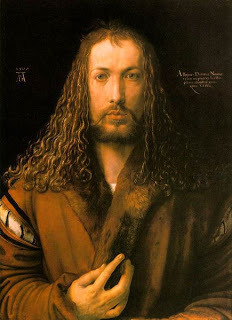
 Intrigued by the Holy Face of Manoppello, I went online to do a bit more research. I came up with this article which purports to be serious research, and sure enough, it has lots of footnotes. The author believes the image of Manappello is a sixteenth century painting. He says there are traces of pigment on the cloth, and he uncovers a fascinating correspondence between the artists Albrecht Durer and Raphael in which Durer sends Raphael a self portrait painted on byssus (byssus is the unusual fabric called 'mussel silk'). The self portrait was done on this transparent cloth and the image was discernible from both sides of the fabric. This would match the correct time period, and we know that Durer did a famous full face self portrait in which he resembles Christ (above left). So, is the image of Manoppello really a self portrait of Durer? It doesn't look like him, but if it resembles any artist of the time it resembles Raphael (above right) not Durer. Did Raphael learn from Durer how to make a similarly 'miraculous' image painted on byssus? Is the image at Manoppello a wonderful self portrait of the artist Raphael? However, Raphael probably would have done a better job. Maybe the image is a sixteenth century painting using the technique known by Raphael and Durer to produce a darn good Veronica 'relic.'
Intrigued by the Holy Face of Manoppello, I went online to do a bit more research. I came up with this article which purports to be serious research, and sure enough, it has lots of footnotes. The author believes the image of Manappello is a sixteenth century painting. He says there are traces of pigment on the cloth, and he uncovers a fascinating correspondence between the artists Albrecht Durer and Raphael in which Durer sends Raphael a self portrait painted on byssus (byssus is the unusual fabric called 'mussel silk'). The self portrait was done on this transparent cloth and the image was discernible from both sides of the fabric. This would match the correct time period, and we know that Durer did a famous full face self portrait in which he resembles Christ (above left). So, is the image of Manoppello really a self portrait of Durer? It doesn't look like him, but if it resembles any artist of the time it resembles Raphael (above right) not Durer. Did Raphael learn from Durer how to make a similarly 'miraculous' image painted on byssus? Is the image at Manoppello a wonderful self portrait of the artist Raphael? However, Raphael probably would have done a better job. Maybe the image is a sixteenth century painting using the technique known by Raphael and Durer to produce a darn good Veronica 'relic.'It all sounds plausible, then you read this article more closely and realize that despite the footnotes the author has made some stunningly uninformed statements. Despite being aware of Paul Badde's research (he mis spells Badde's name) about mussel silk, he doesn't seem aware at all of the strange qualities of mussel silk (byssus) and says that the expert on byssus that Badde found said the fabric was cambric--which is a fine type of cotton cloth. She didn't. She said it was byssus. Furthermore, if Durer painted on byssus why isn't this better known amongst art historians? Did the author really discover such a convenient fact? Why isn't it better documented? If the cloth is byssus, why not take it out of the reliquary and allow for closer and foolproof scientific identification? Why not put the cloth under the microscope to tell us once and for all whether the image is painted?
This shows the fascinating slipperiness of all the research surrounding the shroud and the holy face of Manoppello. As soon as someone gets 'scientific proof' another 'expert' explains why the proof is not quite what it seems to be. So the scientists in 1987 told us through carbon dating that the shroud was from the fourteenth century. Now they tell us that the carbon dating was probably flawed, and they took samples from a part of the cloth that was infected with later, medieval fabrics. Similarly, if they examine the veil of Manoppello and find traces of paint the believers will say, "That was probably from a medieval touch up of the original miraculous image."
It all comes down to the intriguing work of providence in our lives. God will give us enough evidence for faith, but not enough evidence to destroy faith. The shroud of Turin and the veil of Manoppello give us tantalizing scraps of evidence--marvelous pointers to the face of God, but this evidence leads us to faith--it does not force faith. At the end of the day we are brought to a certain point in which faith becomes reasonable. Then we step out of the boat and walk on the water.
Then the real fun begins...
Published on April 23, 2011 08:15
Shea on the Resurrection
Inside Catholic re prints Mark Shea's rip roaring defense of the resurrection here. It's a humdinger.
Published on April 23, 2011 07:54
April 22, 2011
Good Friday
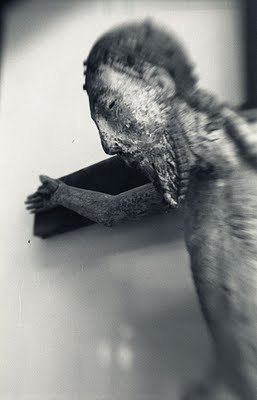
See, my servant will prosper, he shall be lifted up, exalted, rise to great heights. As the crowds were appalled on seeing him – so disfigured did he look that he seemed no longer human – so will the crowds be astonished at him, and kings stand speechless before him; for they shall see something never told and witness something never heard before. Isa. 52.13-15
Published on April 22, 2011 08:21
Good Friday Around the World
The Daily Telegraph has a picture gallery of Good Friday observances around the world. Go here.
Published on April 22, 2011 08:19
Dwight Longenecker's Blog
- Dwight Longenecker's profile
- 80 followers
Dwight Longenecker isn't a Goodreads Author
(yet),
but they
do have a blog,
so here are some recent posts imported from
their feed.


